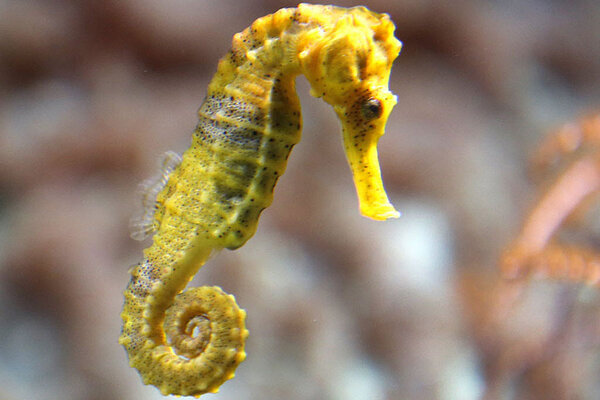
Seahorses reside in the only family in the animal kingdom, whose males handle pregnancy --Syngnathidae.
The proud fathers carry their future horses in a brood pouch for about 24 days of gestation.
Until now, science has always been a bit foggy on just how much of a role these dads play in providing essential nutrients to their young during pregnancy. But new research just published in the journal Molecular Biology and Evolution asserts that male seahorses do much more to nourish the young they carry than previously realized -- to the point of being awfully, well, mammalian.
The Quirky Beauty Of Sea Horses: Photos
"Surprisingly, seahorse dads do a lot of the same things human moms do," study co-author Camilla Whittington, of the University of Sydney's School of Biological Sciences, said in a press release.
"Seahorse babies get a lot of nutrients via the egg yolk provided by their mothers," Whittington explained, "but the pouch of the fathers has also evolved to meet the complex challenges of providing additional nutrients and immunological protection, and ensuring gas exchange and waste removal."
Whittington and her team think it's likely that papa seahorses deliver such care by secreting into the brood pouch essential nutrients such as lipids (for energy) and calcium (for skeleton-making). The embryos then absorb those nutrients.
Five Fantastic Animal Fathers: Photos
The researchers also found, via analysis of brood pouch samples, that seahorses switch genes on and off during pregnancy in a manner similar to humans.
"Regardless of your species," said Whittington, "pregnancy presents a number of complex challenges, like ensuring you can provide oxygen and nutrients to your embryos. We have evolved independently to meet these challenges, but our research suggests that even distantly related animals use similar genes to manage pregnancy and produce healthy offspring."
Have a look at the video below, if you're curious to see how the male seahorse sends its young out into the world.



No comments:
Post a Comment